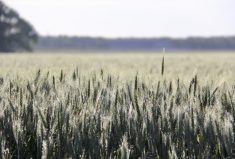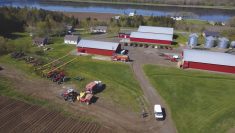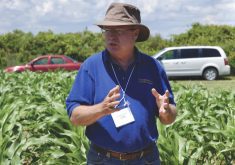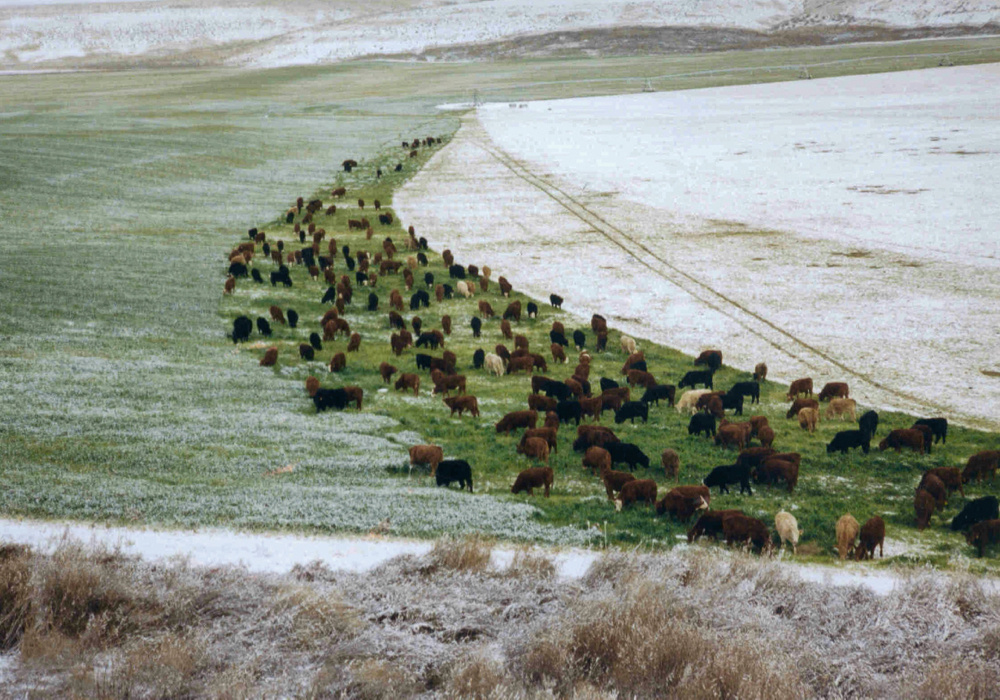On a sunny day in early August, farmers, industry members and researchers gathered at Avena Foods’ pulse and oat facility in Rowat, Sask., to talk about the benefits of regenerative agricultural practices.
They toured experimental intercropping plots, visited varietal test plots and heard about innovations adopted by farmers in the area to boost sustainability on the farm.
Margaret Hughes, vice-president of sales and marketing for Avena Foods, says the demonstration day was meant to start a conversation on sustainable practices in agriculture.
Read Also

Producers aren’t panicking over tariffs and trade threats
The influence of tariff and trade uncertainity on farm business decisions.
A few years ago, Hughes says, the company had been approached by commercial customers asking for metrics on the sustainability of pulse and oat production. Pulse Canada recommended that Avena Foods reach out to Field to Market Canada, whose Fieldprint Calculator helps farmers assess and keep track of their environmental performance.
Avena Foods started with a small group of about 30 Saskatchewan producers to set a sustainability baseline. “What we discovered is that the farmers we worked with rated well in terms of sustainability metrics,” says Hughes.
The company brought on Lana Shaw, research manager at the South East Research Farm, to set up some intercropping and cover-cropping test plots near their facility in Rowat, Sask. The goal was not so much to collect data as it was to get a conversation started, says Hughes.
“Generally, there’s a disconnect between farmers and commercial customers,” she says. “(Customers) didn’t really understand how complicated farming is, and farmers needed a vehicle to communicate with them.
“In many of the larger projects, there’s a commitment to getting a maximum number of acres, converting acres to regenerative ag, or they might be thinking about GHG emissions, but our approach is slightly different. We wanted to bring everybody together and learn from each other. It’s almost a philosophical thing.”
Shaw suggested that Avena reach out to its clients about sponsoring the project, and several, including Bob’s Red Mill, Warburton’s, Old Dutch and Protein Industries Canada signed on.
“Instead of trying to spend a year in committees, we decided to do something plausible on a small scale,” says Shaw.
She put in mixed grain intercropping plots, including oats and peas, oats and lentils and an interseeded cover crop-oats plot. There was also a plain oats plot. At the demonstration day, she says, the response was overwhelmingly positive. She fielded questions about combining and grain separation. “People were really curious and interested,” she says.
Defining ‘regenerative’
Shaw says intercropping isn’t officially a “regenerative” practice. But then again, there are as many definitions of “regenerative agriculture” as there are farmers who practice it.
But diversity is a main goal of regenerative agriculture, she says, and intercropping is a way to increase diversity in grain cropland — generally, a much stiffer challenge than in grazed forages.
“We’re also protecting the soil, a regenerative practice, with (more) complex residue,” she says. “So there are two factors that we’re influencing. It works well on the Prairies because we have such a short growing season — trying to establish cover crops and overlap with a grain crop is very hard.”
Shaw is currently working on several intercropping projects at the South East Research Farm, including chickpea-flax, pea-canola, pea-oat, faba bean-cereal and camelina-lentil.
Farmers still face practical issues with intercropping, such as accessing crop insurance, but the research points to many benefits, both for soil health and farmers’ bottom line.
“Companies want to improve the sustainability of their value chains and there are likely to be premiums offered to farmers who are doing those kinds of things. What those things are is in development,” Shaw says. “It’s not a prescriptive thing, it’s opening the conversation to figure out what’s possible on the farmers’ end and what’s of interest to these food companies in terms of techniques.”
Harvey Bradford, president of Field to Market Canada, says the organization’s current working definition of regenerative agriculture “focuses on an approach to farming that uses soil conservation as the entry point to regenerate and contribute to multiple provisioning, regulating and supporting ecosystem services, with the objective that this will enhance not only the environmental, but also the social and economic dimensions of sustainable food production.”
Field to Market Canada uses five macro-level sustainability metrics, Bradford says: greenhouse gas emissions, energy use, land use efficiency, soil erosion risk and soil organic carbon change.
In addition to the ongoing pea and oat project for Avena Foods, Field to Market Canada has projects with companies including Mondelez International, General Mills, PepsiCo Foods and Warburtons. They also have projects with agribusinesses ADM milling, Ceres Global Ag Corp, and Parrish and Heimbecker.
Exactly how companies will support farmers in implementing regenerative practices isn’t yet clear. But Hughes and Bradford both believe they will.
“Commercial customers would like to support farmers in exploring different practices that could be called regenerative — practices like intercropping,” says Hughes. “Our expectation is that somewhere down the line, commercial customers will support farmers in putting in field trials of intercropping.”
Bradford says he can envision a future in which companies start regenerative agriculture pilot plots and offer technical and financial assistance to farmers.
Avena Foods recently announced a Sustainability Advisory Panel comprising farmers, civil society organizations, researchers and industry members.
The group aims to “(develop) a shared understanding and approach to sustainability on the Canadian Prairies — from the farm to processing to customer,” says Hughes.
















